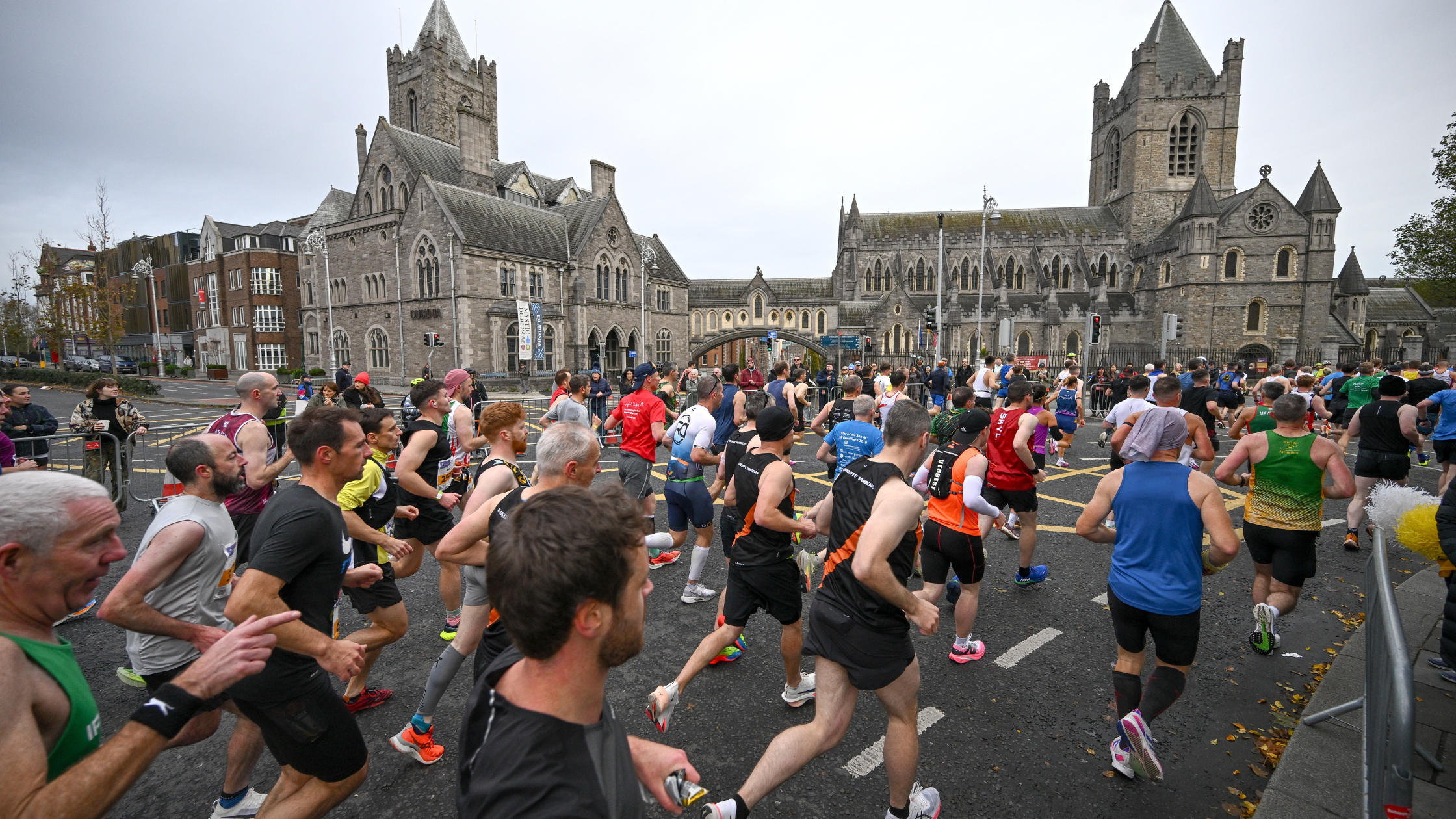Find out what not to do when training for a marathon with our worst marathon training mistakes.
Making a mistake during your marathon training can have a real impact on your performance. Make sure you stay on target and achieve the time you deserve with these marathon errors to avoid.
1. You don't build a base
In order to maximise your chance of success and to minimise the risk of injury, you need to start marathon training with a reasonable base level of fitness. Put it this way, if you’re building a house, you need to start with solid foundations. If you’re planning on running a spring marathon, try if possible, to start banking some miles in late autumn/early winter winter. You certainly don’t need to be doing any spectacular workouts or long runs this far out from a spring marathon, but some good steady running and maybe some hills to add endurance and leg strength, will help you to build a good base of fitness, ready to tackle the miles and kilometres ahead.
2. You don't learn how to burn fat
Part of the art of marathon running is to teach your body to become more efficient at burning fat for fuel. This enables you to spare glycogen so that you are less likely to ‘bonk’ or ‘hit the wall’ during the second half of the race. There are several ways that you can rev up your fat burning engine:
3. You pick the wrong training plan
There are hundreds of training plans on offer, but which one is for you? Do a little bit of research into who the training plan has been created for and pick a plan that matches your ability. If you do not, you will find the plan does not prepare you for the race. Marathon training plans are typically 16 weeks long, but a lead-in period can be useful if you are not an experienced runner.
4. You don’t enter an event before your marathon
Training regularly is all well and good, but what do you do when you don’t seem to improve or progress? The answer: enter a race prior to your marathon event. If you don’t enter a race before your big day you’ll struggle to push yourself and your sessions will lack focus.
5. You over-train
Running a marathon is a daunting prospect and understandably you want to prepare as much as possible, yet do not over-train or you possibly injure or exhaust yourself. For the majority of people, the most you can realistically do is five to six training sessions per week. However, you still need to make sure you include one full rest day in your week, plus you must ensure that the quality of your sessions remains high.
6. You don’t run for a reason
Although running for the love of running is great, sometimes it can be really helpful to have a reason to run. During the second half of your marathon race the challenge is just as much about your mental attitude as it is your physical abilities. Running for a charity that means something to you is sometimes the best way to stay focused and boost your motivation when the going gets tough come race day.
7. You skip interval or speed training
It’s easy to get hooked up on running long when training for a marathon. There’s no doubt that longer runs and sustained efforts are really important aspects of marathon training. But you shouldn’t neglect some slightly speedier work at your 5k and 10k pace. Including some work at this pace will tap into a different energy system and will make running at marathon pace feel that little bit easier. You can also include some ‘strides’ once or twice a week after an easy run in order to maintain some leg cadence during those marathon miles. Try 6 x 75-150m with a walk back recovery. You should be running at close to your maximum speed without actually sprinting.
8. You don't inch up the long runs
Many people fall into the trap of starting marathon training like a bull in a china shop and try to run too far too soon. You should gradually aim to increase the distance and speed of your long run over the course of a marathon build up. Try adding 10 minutes a week and then reduce the distance every fourth week. Remember, every long run that you do doesn’t necessarily have to be longer and faster than the week before! Significant jumps in distance and speed can be physiologically and psychologically hard to deal with and often result in illness or injury.
9. You don't practise fuelling
If you’re doing long runs you need to take some fluid on board. Even on cold days it’s amazing how much water you lose through sweat. Even mild dehydration can significantly impair your performance and makes you more vulnerable to cramping in the later stages of the race. Start practising your fuelling strategies early; whatever you use-sports drink, gels and Jelly Babies, practise beforehand in training, to make sure that your fuel of choice doesn’t cause you any gastric distress. Don’t leave it to chance on race day!
10. You don’t refuel post-run
What you do after your marathon training session is just as important as what you do during your session. Within fifteen minutes of finishing your run drink a glucose-replacement drink. This will make sure you hydrate and top up your glucose levels. Then, within two hours of your run you should eat a meal that includes protein and carbohydrates. Make sure you drink several glasses of water as well.
11. You don’t adjust your shoes
Running is not a glamorous sport and if you’re in any doubt about this ask any serious runner to remove their shoes and take a look at their black or non-existent toenails. ‘Runner’s toe’ is a normal complaint that most long-distance runners experience, but it’s not a necessity. ‘Runner’s toe’ occurs when your feet heat up on a long run. This heat causes your feet to expand and the space within your shoe to reduce. As a result your toe hits the inside of your shoe, which damages the nail. Buying correctly fitting running shoes will help you avoid this discomfort. You should also adjust your running shoe during your run to give your expanding feet more room.
12. You stretch your muscles before they are warmed up
Stretching can seem like a complex business, but if you want to work on your flexibility you should not stretch before your muscles are fully warmed up. This is because muscles that have not been warmed up are inelastic and therefore stretching them will result in an injury. Instead wait until your muscles are relaxed and fit in a flexibility session after your run when your muscles will be warmed up. Ideally you can do your flexibility stretches during your cool-down.
13. You exercise during your taper
Tapering is an important and essential part of any marathon training plan and if you don’t want to end up lagging in your race come marathon day you need to stick to the taper set out in your training plan. So, not only should you not run to excess, you should not do any other form of exercise for long periods. A little cycling or some walking may be okay, but remember the taper period is an opportunity for your body to recover and prepare for your marathon.
-
Longer, slower runs will help to promote fat burning as your body relies more heavily on fat for energy during long duration, low intensity exercise.
-
Try some pre-breakfast runs. Your glycogen stores are slightly depleted first thing in the morning as your body uses glycogen even when you sleep. Try doing some of your runs before breakfast, because when in a fasted state, your body will again turn to fat for fuel. If you are not used to doing this then start with short, easy runs because otherwise you may struggle. You could run pre-breakfast for easy and mid-length long runs, but if doing a harder workout, then eat breakfast first.
-
Eat fat to burn fat. Your body is more likely to burn fat if you have some fatty acids in your bloodstream. Eating a small amount of fat pre-run will help to kick start your fat burning metabolism. This could be peanut butter on toast or maybe some nuts and seeds.















